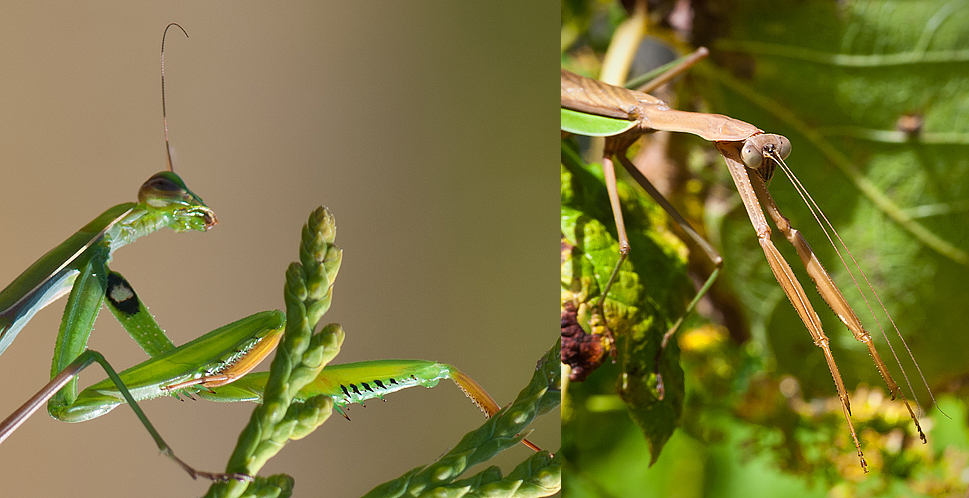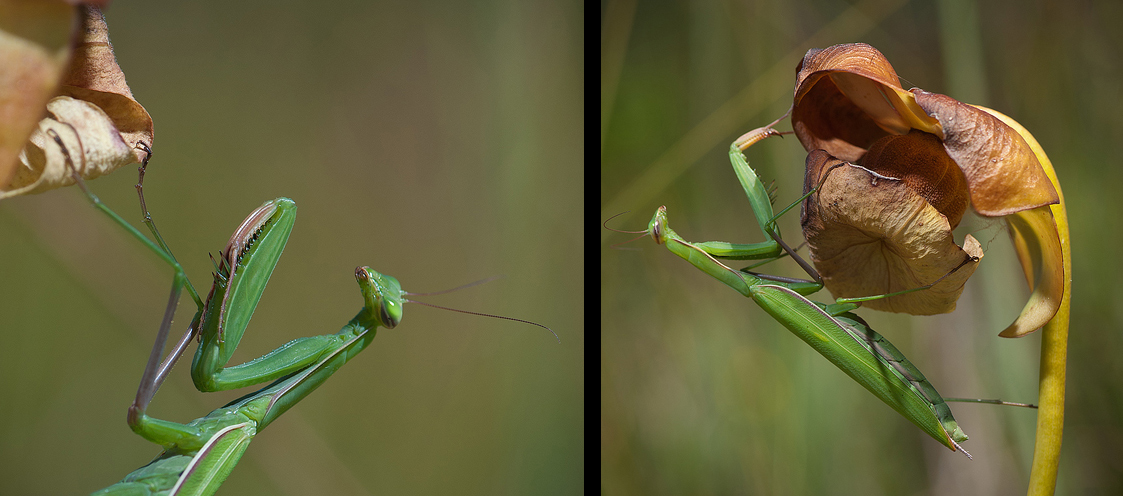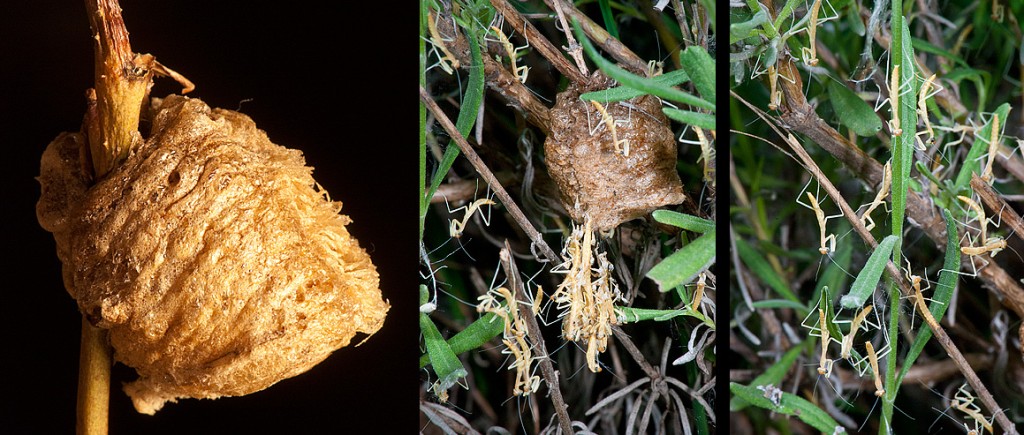Michigan has two species of Praying Mantis: The European Praying Mantis (Mantis religiosa) and the Chinese Praying Mantis (Tenodera aridifolia). As the common names imply, neither one is a native species.
The European Praying Mantis has a black spot, often with white “bull’s-eye,” on its upper front legs. The color of the forewings is uniform.
The Chinese Praying Mantis lacks the spot on the front leg. The forewings are tan with a green front edge. This species is longer on the average than the European Mantis but the sizes overlap.
Praying Mantises were introduced by gardeners because they eat insects. Hopefully they consume more harmful insects than good insects. I have often seen a Praying Mantis eating a bee or other beneficial pollinator.
The egg masses overwinter on an exposed stem. In Michigan, the hatching time is late May or early June. The nymphs are tiny versions of the adults without wings. They hatch by the hundreds and quickly disperse because they are cannibals. It takes six to eight molts for them to reach the adult stage. Mating and egg laying take place in September or early October. Contrary to popular belief the female does not always eat the male after mating with him. This rumor started when laboratory raised mantis were mated. The females had not been properly fed. If the female is hungry then she will try to make a meal out of her mate. It is estimated that 30% of the matings in nature end with the male being consumed.
I always enjoy finding a Praying Mantis. Autumn is when I find most of them; as they grow, they become easier to find. They are also out looking for mates and a practiced eye can spot them. Get out and look for them. I often find them in my yard.
Copyright 2013 by Donald Drife
Webpage Michigan Nature Guy
Follow MichiganNatureGuy on Facebook




